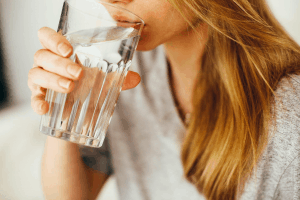You must be curious about how a packaged drinking water plant works, right? Well, grab your virtual hard hat, and let’s take a conversational tour through this amazing process. I promise to keep things fun and interesting while explaining the science behind it all.
To start, think about how many times you’ve turned on the tap, filled a glass with water, and enjoyed a cool, refreshing drink without a second thought. It’s a luxury we often take for granted, but have you ever wondered how the water that reaches your home is made safe for consumption? That’s where the magic of drinking water treatment plants comes in. These facilities turn raw water from lakes, rivers, and underground wells into safe and tasty drinking water. So, let’s dive into the step-by-step process.
1. Source Water
Before treatment begins, the water has to come from somewhere, right? The source water is typically collected from surface water (such as lakes, rivers, and reservoirs) or groundwater (from underground wells).
2. Screening
Now that we’ve got our water, we need to get rid of any large debris like leaves, sticks, and fish (yes, fish!) that might be floating around. This step is known as screening, and it involves passing the water through screens with large openings that catch and remove these larger objects.
3. Coagulation and Flocculation
With the big stuff out of the way, it’s time to tackle smaller particles, like dirt and clay, that might make your water look cloudy. This is where coagulation and flocculation come into play. In coagulation, chemicals like aluminum sulfate or ferric chloride are added to the water, which causes the tiny particles to stick together and form larger clumps called “flocs.” Then, during flocculation, the water is gently mixed which allows the flocs to grow in size and become a lot easier to remove.

4. Sedimentation
Now that we have got these larger flocs, it’s time for them to take a break and settle down – literally! The water flows into a sedimentation basin, where the flocs slowly sink to the bottom due to gravity. This process helps separate the clearer water from the settled floc, which is then removed and treated separately.
5. Filtration
We are getting closer to that crystal-clear water we all love, but there’s still work to be done. The water from the sedimentation basin is now sent through filters made up of sand, gravel, and sometimes even activated carbon. These filters act like a super-fine sieve, catching and removing any remaining particles and impurities. And the result? Clear, clean water that’s starting to look pretty darn drinkable!
6. Disinfection
But wait, there’s one more crucial step before we can enjoy our water: disinfection. This step is all about killing or inactivating any harmful microorganisms, like bacteria and viruses, that could make us sick. The most common methods of disinfection are chlorination (adding chlorine to the water) and ultraviolet (UV) light treatment. Chlorine is effective and relatively cheap, but it can sometimes create disinfection by-products (DBPs) that may have health effects. UV light, on the other hand, doesn’t create DBPs, but it’s more expensive and requires a reliable power source. It’s all about finding the right balance!
7. Storage and Distribution
Alright, our water is now clean, clear, and safe to drink! But we’re not done yet. The treated water is stored in large tanks or reservoirs, where it can be distributed to homes, businesses, and other locations through a network of pipes. This storage step is essential, as it ensures a steady supply of water is available whenever we need it.
8. Monitoring and Testing
Water quality experts at the treatment plant and throughout the distribution system constantly test and analyze the water to ensure it meets the required safety standards. This rigorous monitoring helps identify any issues or potential problems, allowing for quick action to be taken if needed.
And there you have it! In just a few steps, our drinking water treatment plant has transformed raw water into the safe, clean, and refreshing water we enjoy every day. It’s a fascinating process that combines both simple and advanced technologies to protect public health and ensure we always have access to live’s most essential resource: water.
Way Forward
So, the next time you turn on the tap or take a sip of water from your glass, take a moment to appreciate the incredible journey it has taken to get to you. And if you ever have the chance to visit a packaged drinking water plant in person, don’t miss the opportunity to see this amazing process in action! And if you are planning to set up one, then this blog can be your go-to guide!
 Request a Quote
Request a Quote

